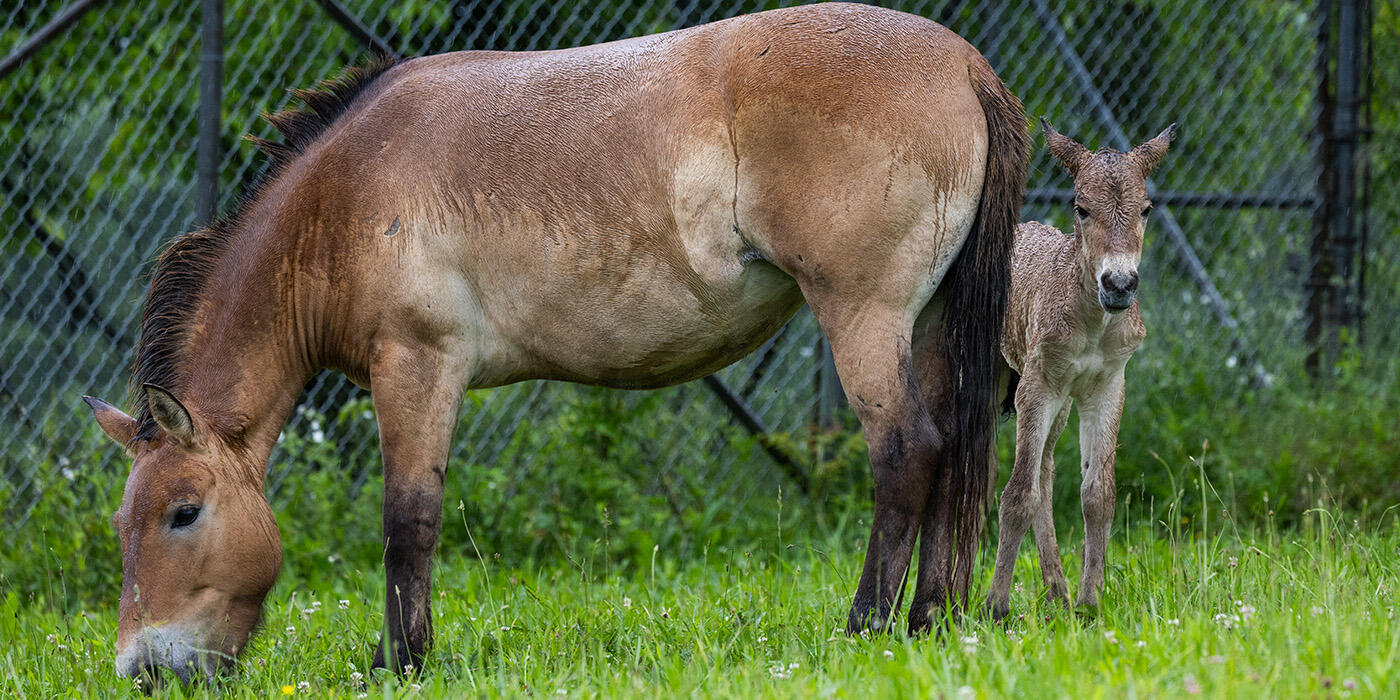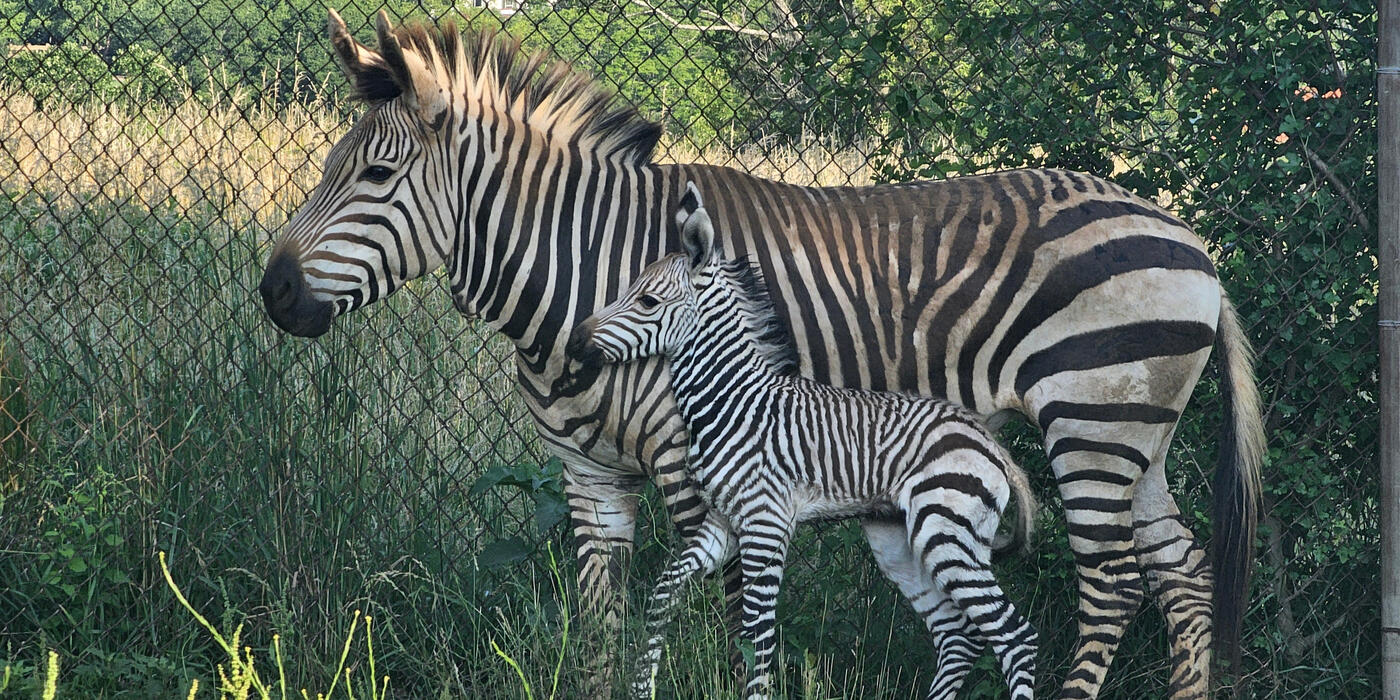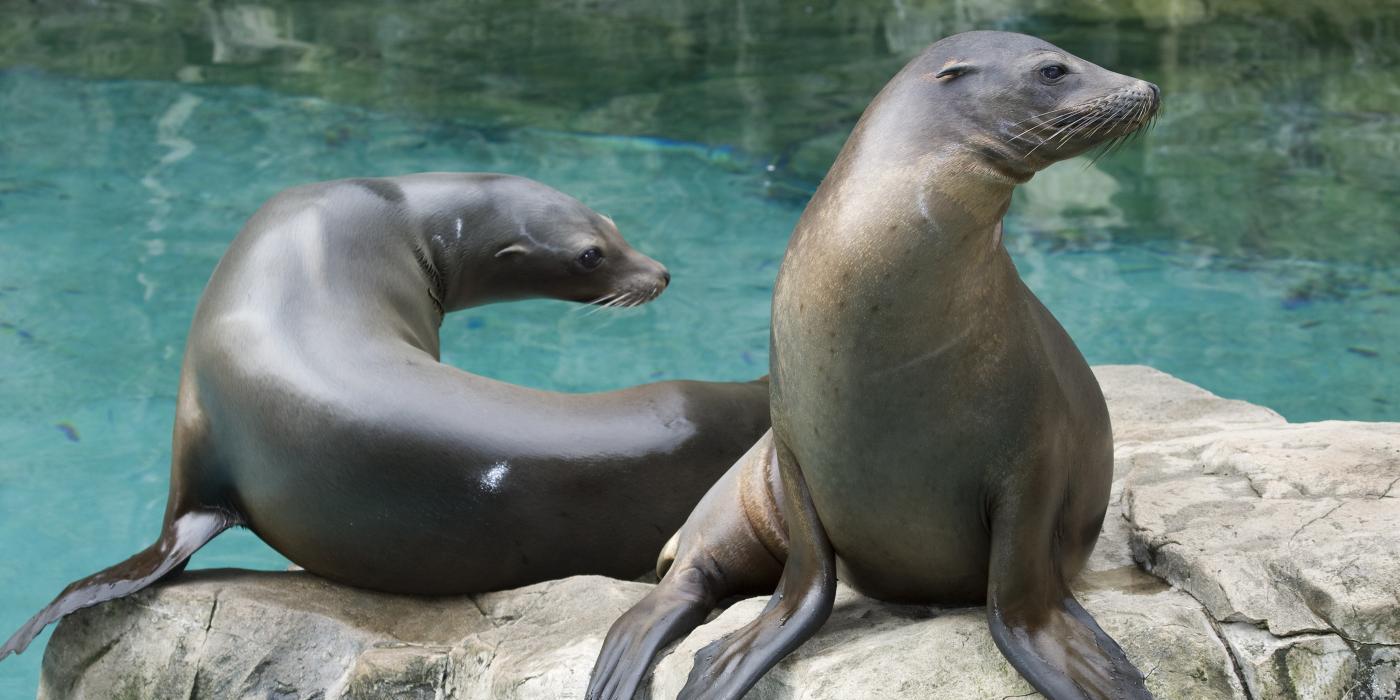How the Zoo Cares for Animals With Impairments
Every animal at the Smithsonian’s National Zoo and Conservation Biology Institute receives special care, but some need a little extra support to keep them healthy and active.
Some of the Zoo’s animals are impaired, meaning they have physical conditions that limit certain functions considered typical for their species. Often, these animals were rescued by wildlife rehabilitators after sustaining serious injuries that greatly affected their chances of survival.
Dedicated animal care staffers build trusting relationships with these animals over time, taking limitations into account while encouraging the animals to take part in training and enrichment that promotes physical and mental wellness.
Here’s how the Zoo cares for animals with impairments:
Virginia opossum
Although slow and clumsy on the ground, Virginia opossums (Didelphis virginiana) are excellent climbers. North America’s only marsupials use their long, hairless tails and thumb-like appendages, called halluxes, to navigate tree branches with the grace of a tightrope walker.
When Basil was rescued from the Washington, D.C., suburbs and brought to a wildlife rehabilitation center, staff discovered the juvenile opossum had suffered traumatic injuries in what was probably a predator attack. Basil recovered, but his left eye needed to be removed.
The loss of vision would limit Basil’s ability to do things like stay aloft among the treetops, but it didn’t have to stop him from living a healthy and fulfilling life. He soon found a new home as a wildlife ambassador at the Zoo’s Small Mammal House.
While Basil is not the first member of his species to live in the Zoo, keeper Mimi Nowlin says his impairment required some modifications to the typical opossum playbook. To help Basil move around his exhibit area with confidence, Nowlin and the animal care team swapped out thinner branches with thicker perching material that gives him a better grip.
His vision loss makes him “a little nervous about what’s going on near the left side of his body,” which is why Nowlin takes care to approach from his sighted side. And when introducing Basil to new objects for enrichment, she holds the item near his nose so he can engage his excellent sense of smell.
Bald eagle
For many, watching a bald eagle (Haliaeetus leucocephalus) soar through the skies is a profound and inspiring image. But a flightless eagle, like 4-year-old Acadia, can still bring a sense of wonder to Zoo visitors.
Wildlife rehabilitators in Florida rescued Acadia on the ground, blind in one eye and with a broken wing. Even after rehabilitation and physical therapy, staff realized she would never again be able to fully extend her right wing. Acadia was deemed non-releasable.
“Unfortunately, an eagle that just walks is not going to be successful at hunting,” says American Trail keeper Ashley Graham.
Raptors use their wings not just for flight, but for balance. Their powerful talons are ideal for gripping, but without the ability to fully outstretch their wings, birds like Acadia have a harder time staying upright.
Fortunately, Acadia is a great hopper— she can jump up to two feet in the air. Perches and platforms in her exhibit were specifically placed with this height in mind. And if she thinks she needs an assist, she makes use of ramps and stumps to access harder-to-reach areas.
Keepers are also working with Acadia to get her comfortable perching on a gloved arm, although they take care to give her the few extra moments she needs to find her balance. Graham hopes Acadia can become an ambassador animal, inspiring and educating visitors on the importance of wildlife conservation.
Gray seal
Jo-Jo needed lots of support when she first arrived at the Zoo.
In May 2022, the juvenile gray seal (Halichoerus grypus) was rescued by the Marine Mammal Stranding Center in Brigantine, New Jersey. The five-month-old pup had cataracts in both eyes, as well as nystagmus, a vision condition marked by rapid, uncontrollable eye movements. Later, Zoo veterinarians determined she was also suffering from a serious jaw infection and injuries to her neck.
Jo-Jo can discern between light and shadow but is otherwise blind. “She wouldn't be able to survive out in the wild because that visual impairment would prevent her from being able to hunt effectively, find land, avoid predators and interact with other seals,” said American Trail keeper Diana Vogel.
Fortunately, the American Trail keeper team had plenty of experience working with vision-impaired pinnipeds— Kara, a 40-year-old gray seal who also lives at the American Trail, is completely blind. While keepers across the Zoo use a combination of verbal and visual cues to get animals to participate in a desired behavior, American Trail keepers had to get Jo-Jo used to verbal and tactile cues instead.
When she first arrived, Jo-Jo was terrified of leaving the water in her behind-the-scenes holding area. Without the ability to recognize objects, she perceived even nearby food as a threat. Keepers patiently fed her fish and used verbal cues to help her get acquainted with her new surroundings. Over time, she began to associate different words with food, training targets and enrichment activities.
Patience paid off for Jo-Jo. After a year at the American Trail’s seal pool, she is able to draw upon her memory of her exhibit area—as well as her sensitive whiskers—to swim freely without fear or hesitation.
California sea lion
California sea lions (Zalophus californianus) often hunt cooperatively. Working together to herd up their prey, a group of sea lions can eat between five and eight percent of their body weight in one day.
But for Ronin, every bite was a struggle.
Ronin was rescued on the coast of California, alone and significantly undersized for her age. As Ronin was being rehabilitated, staff at the Pacific Marine Mammal Center (PMMC) noticed the 1-year-old sea lion was having difficulty eating her fish. They discovered she was born without salivary glands: she could not properly swallow food. Without the ability to feed herself, she would be unable to survive in the wild.
The solution turned out to be a form of occupational therapy. With the aid of a sea lion keeper from a nearby zoo, PMMC staff physically assisted Ronin by helping move the fish down her throat. After a while, and with positive reinforcement and verbal cues, she learned how to swallow small pieces without assistance. And with staff consistently delivering food to her mouth in a very specific way, Ronin eventually taught herself how to eat full-sized fish on her own.
“Now we feed Ronin exactly the same way as all the other sea lions. She's been an amazing addition to the American Trail. And it's a huge success story for the Pacific Marine Mammal Center,” said Vogel.
Abyssinian ground hornbill
Abyssinian ground hornbills (Bucorvus abyssinicus) get their name from their impressive pincer-like beaks. But these beaks are for more than just show – Abyssinian ground hornbills use their long beaks to pick up food, and then toss the food item back and swallow it whole. This method of eating is necessary because Abyssinian ground hornbills lack teeth. These birds evolved to eat a wide variety of food items, so the ability to make precise movements with their beaks is critical.
But for Karl, precise movements weren’t an option. When Karl came to the Zoo, his lower beak was significantly shorter than the top, due to an injury. He’d learned to adapt by turning his head sideways to pick up large food items, but keepers noticed he was unable to pick up smaller pieces of food. The older he got, the more worn down his lower beak became.
Karl’s animal care team turned to colleagues at the Smithsonian’s National Museum of Natural History. Using the skull of a deceased Abyssinian ground hornbill in the museum’s collection, exhibit specialists rendered a 3-D model of the hornbill’s skull, which was used as a reference to create a 3-D printed prosthetic beak for Karl. Once attached, Karl was able to use his new beak to do everything a hornbill should.
Right now, Karl lives behind the scenes while his exhibit on the Zoo’s Africa Trail is under renovation. Learn more about Karl—and his fellow hornbill, Karoline—in this story.
Related Species:




